Ghosting traditionally relates to the appearance of lightly coloured boot prints that appear in a floor finish, usually some considerable time after the floor was coated. Owners begin to see a lighter patch in the coating, confused at what this may be until it becomes more obvious forming into a boot print and then the question arises, who does it belong to? Not my foot size, not my type of footwear … so who does it belong to? …
Ghosting is however not confined only to boot prints but also relates to bare feet, hand prints and cloudy smudges of no predetermined shape. These differ from contact staining which is sometimes referred to as ‘tattooing’ and imprints that can occur from walking on a wet coat.
A Case Study
This home was coated with gloss solvent based polyurethane approximately four years prior to viewing this floor and the ghosting was first noticed about two years after occupancy. The upper level floor was coated about two weeks after the lower level floor. On the upper level ghosting is present in just one place, at the entrance to the ensuite of the master bedroom. Due to the design of the dwelling, this area of the master bedroom outside the ensuite would have been coated first, before the rest of the bedroom and also before other areas of the upper level floor. Therefore, it suggests a contaminant may have come from the ensuite.
However, the lower level floor has much more extensive ghosting present. The ghosting is present at the main entrance, at two patio doorways, the centre of the lounge floor and to lesser degrees or just ‘developing’ in other areas. In the upper and lower level floors there are definitely three different boot prints (top floor, entrance, mid lounge) and maybe up to five different boot prints (patio entrance and base of staircase). In addition to this a bare foot or foot through sock imprint is also present. Some boards appear more susceptible than others to ghosting. There are areas where a number of consecutive boards are affected in some areas and in other areas it appears confined to only a few adjacent boards.
At the entrance the ghosting appeared in the main traffic area through the doorway. A highly developed footprint would however not lead to a second developed foot print in the next step. Photos and further comments are provided below.
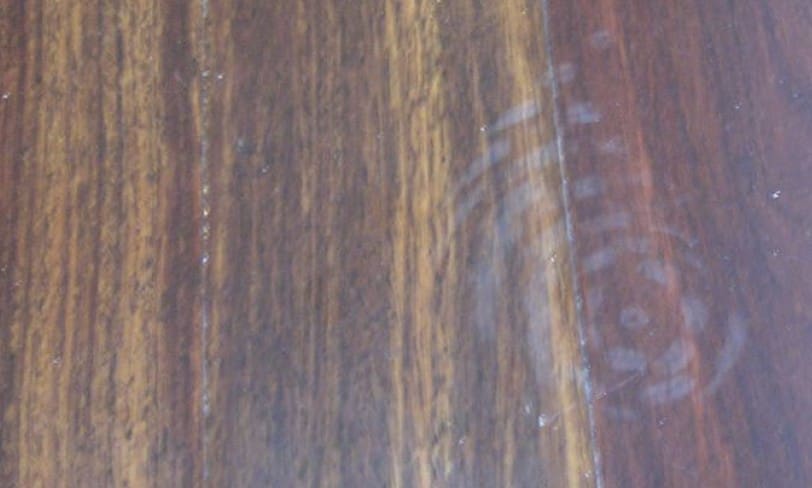
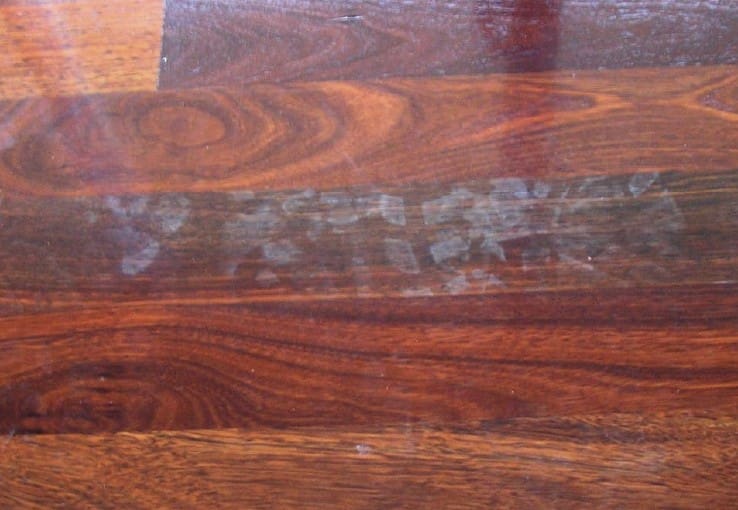
Bare foot print in the lower left photo. However, there were possibly only two or three bare foot prints discernable over the whole floor. The photo on the lower right shows a different style of boot mark at one of the patio doorways in the lounge.
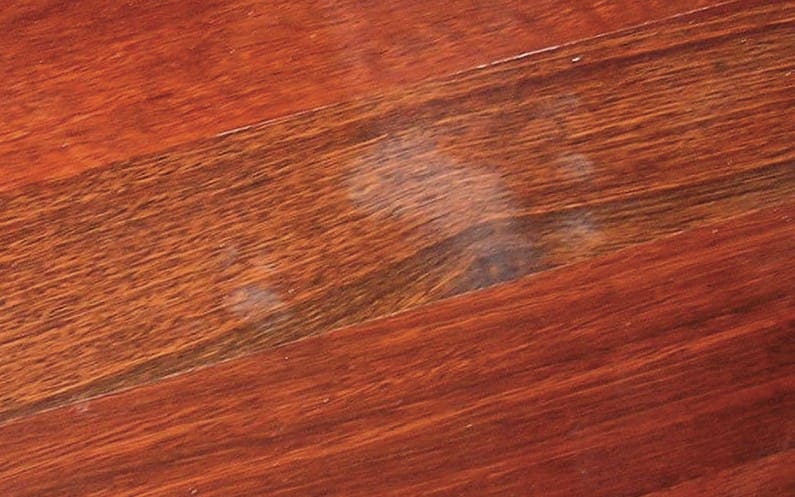
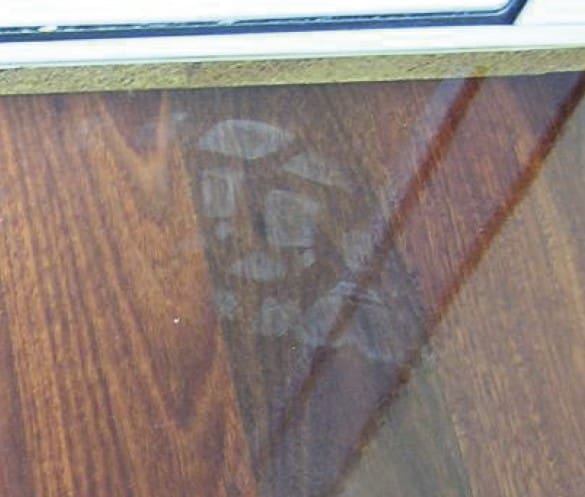
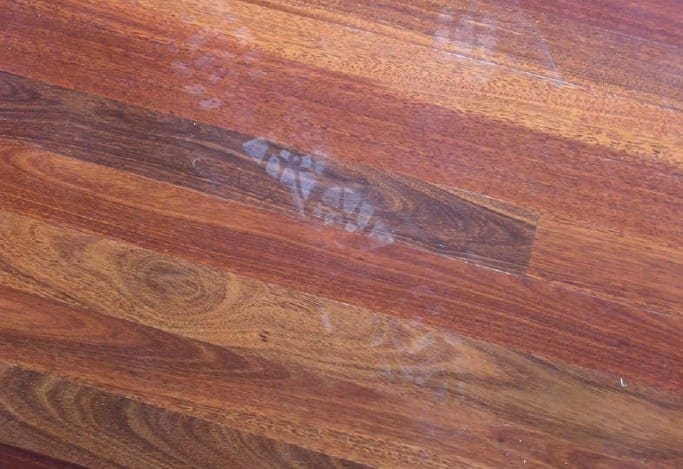
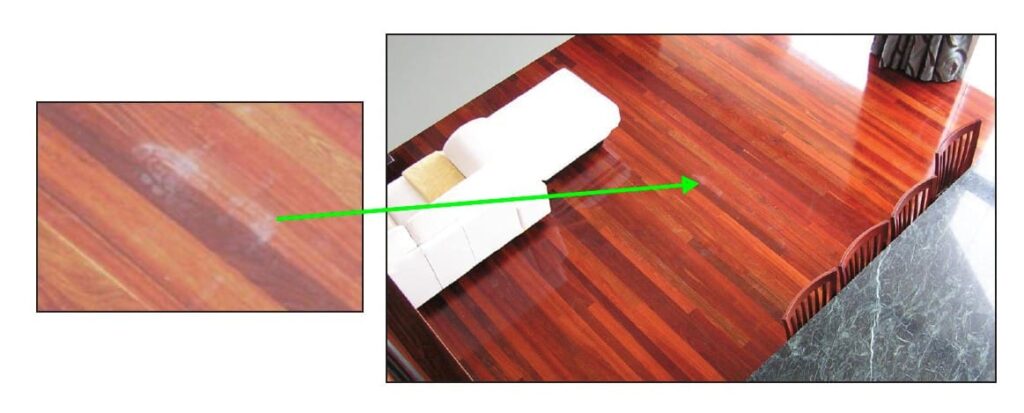
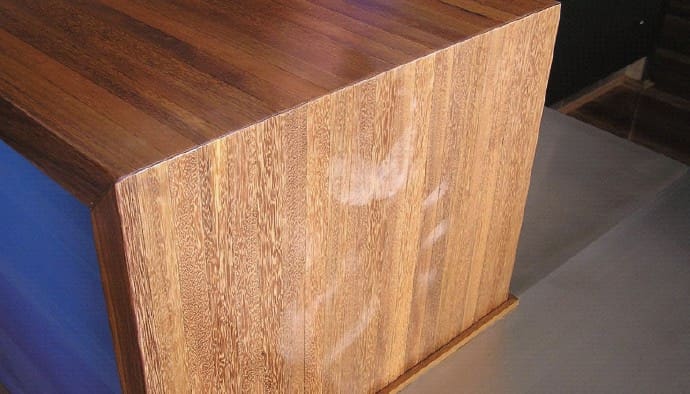
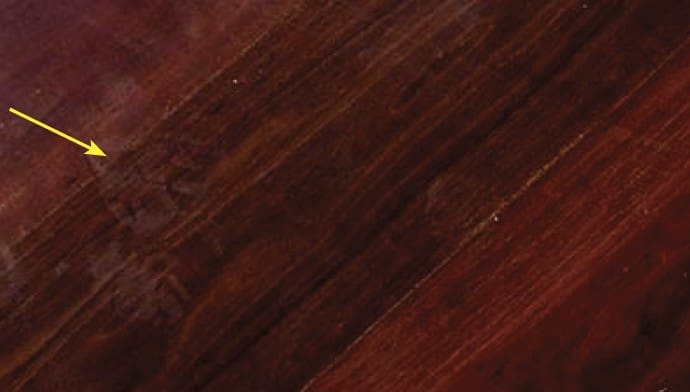
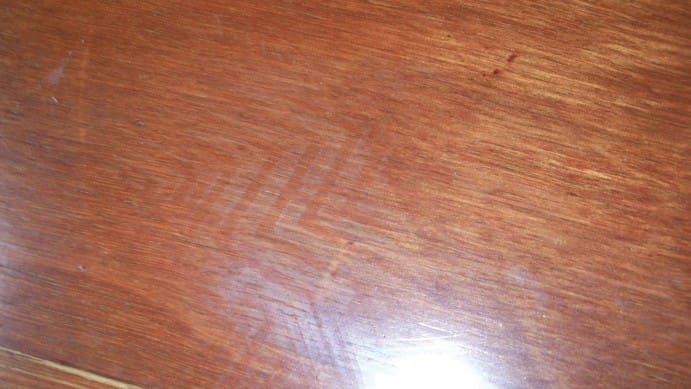

What do we know about Ghosting?
Or perhaps it may be better to say what do we think we know about ghosting? Due to the intermittent nature of the problem and affecting relatively few floors, the problem to date is not fully understood and has not been fully solved. It has been investigated to a degree but this has often left even more questions about ghosting that do not fit the explanations.
What we do know is that reports of ghosting only started in the late 90’s and it was at this time that fast dry solvent sealers (vinyl type) and water based polyurethanes began to enter the market. The sealers provided improved productivity allowing the first of the final coats, for both solvent and water based finishes, to be applied the same day. A quicker job had benefits to both contractor and client.
Some ghosting is considered to be caused by oils being absorbed from bare feet or more often footwear into partially cured coatings that contain residual solvents. These residual solvents rapidly dissolve the oils from certain footwear and even from bare skin. The oils remain dormant within the cured coatings until gradually broken down by UV light in a radiation induced photo-oxidative degradation. Under the action of the breakdown they develop an amorphous structure that is visible under a microscope at 200 times magnification. This loose amorphous structure is typical of photo oxidation breakdown of polymers (oils are polymers). The result, a gradually appearing, ‘ghost’ reproduction of the exact object that was in contact with the floor.
In instances of this that have been studied, the boots had elastomer or urethane thermoplastic soles as opposed to nitrile or neoprene vulcanised rubber soles. The majority of prints were within two meters of walls, weather conditions were often warm and humid. Furthermore, slower drying, water and solvent based sealers were also involved and note that humid conditions retard solvent evaporation.
The thermoplastic sole not being solvent resistant will show tackiness when rubbed with solvent. Two such solvent are toluene used in some solvent based sealers and glycol ether used in water based sealers. Therefore from this we have a recipe that incorporates boot type, sealer type and weather conditions as being factors that can contribute to ghosting.
The final ingredient is UV light, which with time, turns the invisible footwear polymers dissolved in the coating into a visible milky coloured compound of the shape that made it. This has also been replicated in a laboratory environment. When it comes to bare skin it is considered that the oils present are similarly dissolved in the coating and similarly develop a milky colour with time, under UV light.
Lessening the risk
To lessen the risk of this type of ghosting solvent resistant footwear (not just oil resistant) should be worn and it is essential to allow the sealer coat ample time to fully dry, especially in high humidity or cool weather. This is especially the case with fast dry sealers. This outlines good practice when coating floors but also outlines that is equally essential that other contractors and owners do not to walk on floors until the flooring contractor permits them to. The floor is ‘no go’ zone except for the flooring contractor.
What others have suggested
At times and as in the case study above we see an area where there is ghosting adjacent to an ensuite and question whether the tiled and marbled area had an influence, or similarly ghosting is noticed to predominate near a patio exit onto a paved area and again we question as to whether there is a link. However, mineral contaminants such as plaster or the like would present as crystalline deposits and appear straight after cure due to their insolubility. As such plaster and similar compounds are not considered to produce ghosting.
Perspiration is also another thought that others have had. Perspiration is known to produce small circular milky marks both on and between water based coatings, however, this is not the case with solvent based coatings, so it is unlikely to be the cause of ghosting we see in both solvent and water based finished floors.
But why would we see boot marks in the risers of staircases, why did ghosting appear with the ‘possum’ incident mentioned earlier or why did ghosting become apparent in the floor that recoated after seven years?
Anecdotal evidence also suggests that although often considered to be present between the sealer and final coats ghosting can be corrected by sanding back to bare timber. This has been known to work, yet not every time, as after re-sanding and coating the original ghosting has returned. This had led some to suggest that the timber itself is affected and due to boot prints being present in stairs risers, some credence can be given to this view.
So there are some things we can probably discount as being associated with true ghosting and there are still some aspects to be solved.
Some final points to consider
Firstly, although a problem that needs to be addressed, it must also be considered that ghosting is not a common problem. With ghosting there are a variety of aspects, some well understood and others not well understood, and it would appear that ghosting can come about in a number of different ways. As such it is considered that it can be induced in the raw timber, between coats and some years after a coating has been applied. As indicated there is also some level of risk in attempting to fix it, as it may reappear, but not in all instances. In cases of ghosting, it is unlikely that blame can be apportioned. Therefore, resolution where parties might agree to share costs to repair or arrive at a similar agreement has often proved the best course of action.
